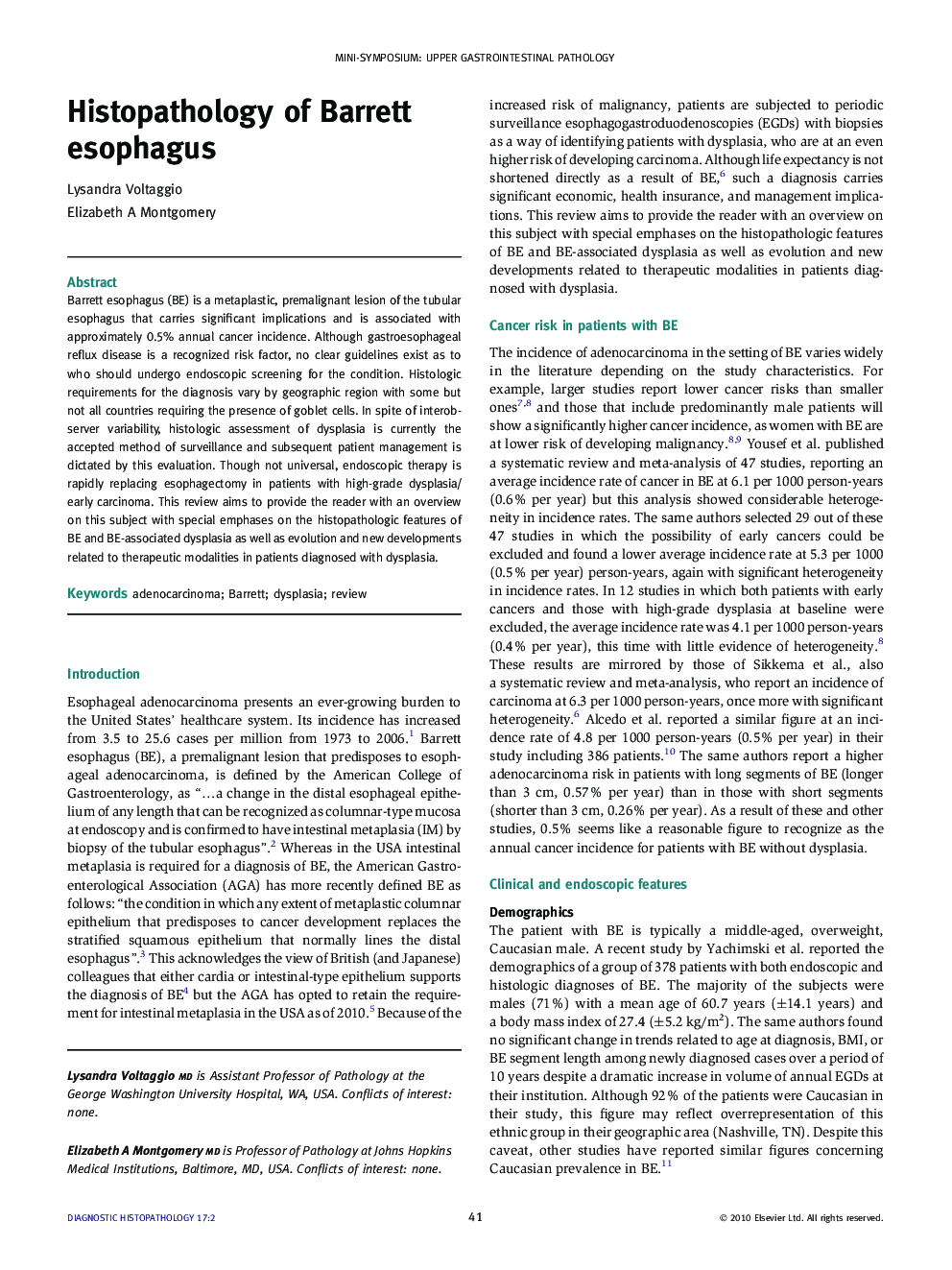| Article ID | Journal | Published Year | Pages | File Type |
|---|---|---|---|---|
| 4131426 | Diagnostic Histopathology | 2011 | 9 Pages |
Barrett esophagus (BE) is a metaplastic, premalignant lesion of the tubular esophagus that carries significant implications and is associated with approximately 0.5% annual cancer incidence. Although gastroesophageal reflux disease is a recognized risk factor, no clear guidelines exist as to who should undergo endoscopic screening for the condition. Histologic requirements for the diagnosis vary by geographic region with some but not all countries requiring the presence of goblet cells. In spite of interobserver variability, histologic assessment of dysplasia is currently the accepted method of surveillance and subsequent patient management is dictated by this evaluation. Though not universal, endoscopic therapy is rapidly replacing esophagectomy in patients with high-grade dysplasia/early carcinoma. This review aims to provide the reader with an overview on this subject with special emphases on the histopathologic features of BE and BE-associated dysplasia as well as evolution and new developments related to therapeutic modalities in patients diagnosed with dysplasia.
